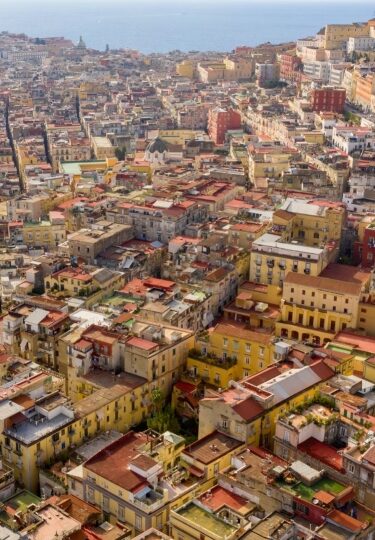The Quartieri Spagnoli is a colorful warren of lanes adjacent to Naples’ historic center. Today, people will use adjectives like “cinematic” about what used to be one of the most insalubrious neighborhoods in the city.
Originally an area designated for the Spanish soldiers garrisoned here in the 1500s, Naples’ Spanish Quarter swiftly became the center of a booming black market economy. While once it was a no-go area, today a visit to Naples isn’t complete without getting lost in its network of lanes.
So set out to discover the narrow alleys, neighborhood trattorias, tiny cafés, and grand old buildings of Naples’ Spanish Quarter, and be enchanted.
Attractions
Chiesa di Santa Maria Francesca delle Cinque Piaghe
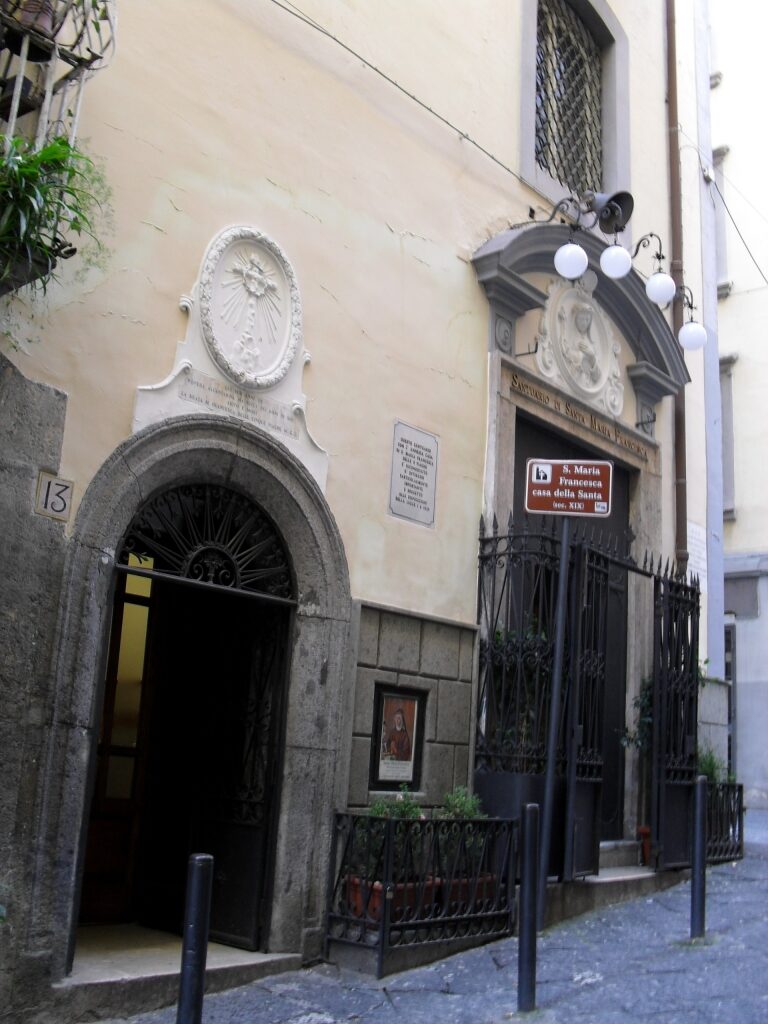
Chiesa di Santa Maria Francesca delle Cinque Piaghe Photo by Baku on Wikimedia Commons, licensed under CC BY-SA 4.0
Just off the uneven flagstones of Vico Tofa, you’ll discover one of the more unusual places of worship within Naples’ Spanish Quarter.
As narrow as its name is long, Chiesa di Santa Maria Francesca delle Cinque Piaghe is a blink-and-you’ll-miss-it chapel on a sidestreet. While the sanctuary’s interior is intriguing, with unusual liturgical sculptures such as the Virgin Mary in shepherdess garb, this isn’t the main draw of this spiritual stop.
That’s found upstairs, in the apartment that once belonged to Naples’ only female saint. Within this carefully preserved shrine, the wooden chair awaits the faithful who believed that to sit on it would bring on a much yearned-for pregnancy.
Other artifacts include the saint’s flagellation tools, as well as clothes carrying blood stains from her stigmata.
Piazza del Plebiscito
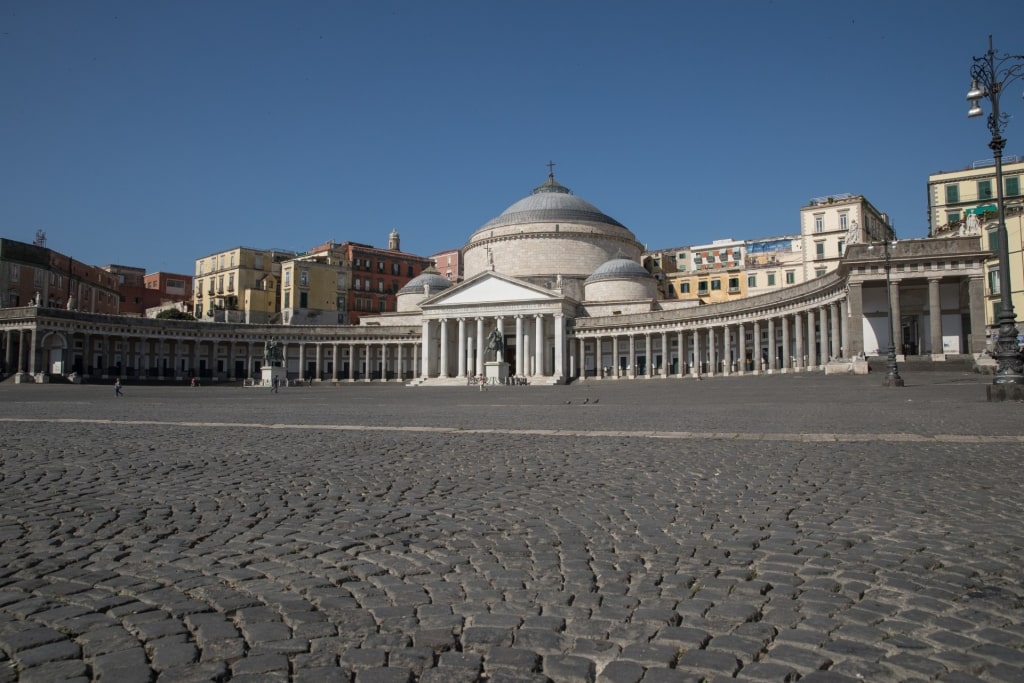
Piazza del Plebiscito
Arriving in the Piazza del Plebiscito from the confinement of the Quartieri Spagnoli can make you feel like you’re exiting a maze. Suddenly the narrow streets fall away and there is Naples’ largest square, a wide-open space encircled in soaring architectural pomp.
Visiting the Piazza del Plebiscito, located on the Spanish Quarter’s southern edge, is one of the best things to do in Naples. You’ll see the posing statuary in the alcoves of the Royal Palace’s facade, as well as the glorious domes floating over the colonnades of the Church of the San Francesco di Paola.
Naturally, after this, you’ll need time to process. Cross the fanned cobbles to legendary Caffè Gambrinus for a reviving espresso in sumptuous surrounds.
San Carlo Theater
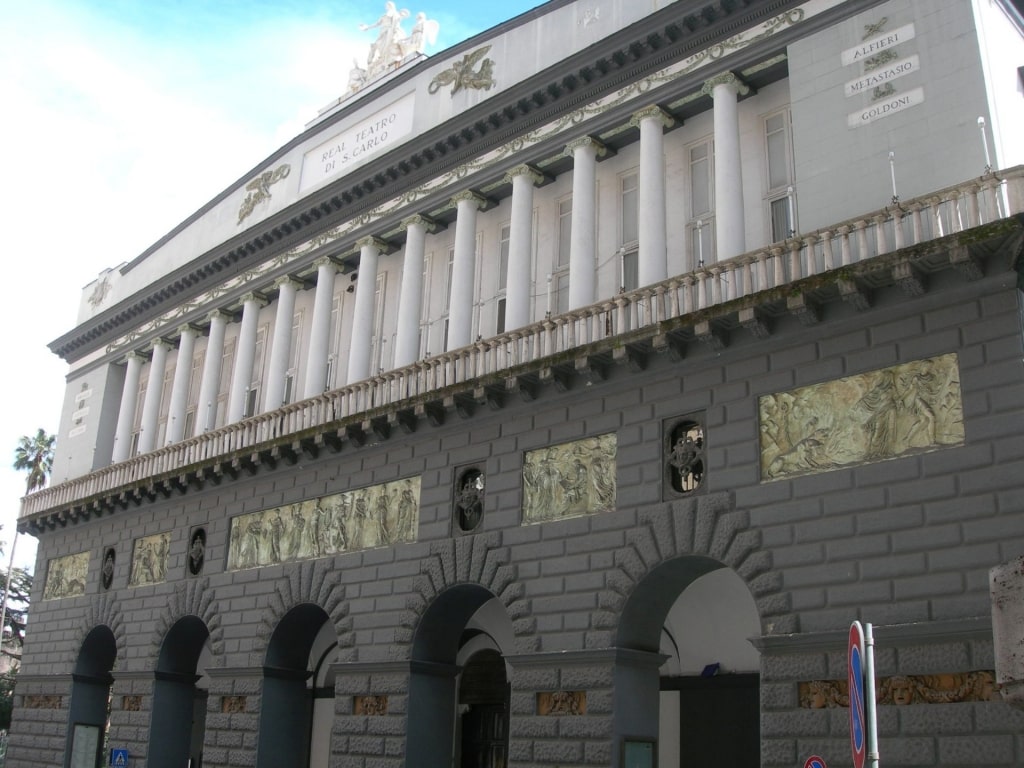
San Carlo Theater
One of Naples’ cultural treasures wrapped up in a grand architectural statement, the San Carlo Theater is a remarkable two-tiered vision of columns and arches, crowned with golden statuary representing the muses. You’ll find it close to the Piazza del Plebiscito.
The world’s oldest continuously active opera house, the San Carlo opened its doors to Neapolitan high society in 1737. Despite how it looks today, the years haven’t been kind. It suffered extensive fire damage in 1816 and was bombed during WWII.
It enjoyed an expensive restoration between 2008 and 2010, and today you’ll find its interior resplendent in glorious gold and scarlet. If you’re not watching an opera, you can enter as part of a half-hour tour. As you peer into the royal box and admire the stage, you’ll learn the theater’s full rollercoaster history and background on Naples’ impressive opera heritage.
Things to Do in Quartieri Spagnoli
See the Magnificent Murals
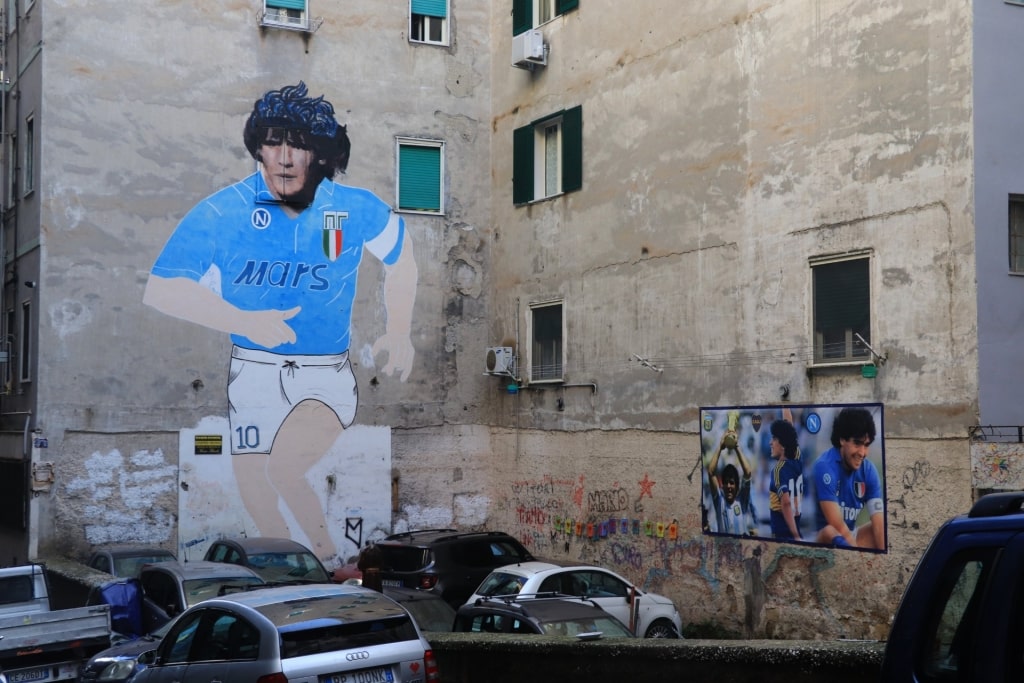
Murale Diego Armando Maradona Photo by Céréales Killer on Wikimedia Commons, licensed under CC BY-SA 4.0
Of all the famous murals in Naples, the most revered in the Quartieri Spagnoli, and the entire city, is the Murale Diego Armando Maradona.
This three-story passion project is located at Via Emanuele De Deo. Spontaneously created by a local fan, it’s a towering homage to Diego Maradona, one of the world’s greatest soccer players. Crucially, the diminutive Argentine helped the local team Napoli to two Serie A titles, an achievement that was at the time unprecedented for a team from Italy’s south.
Beneath the mural, you’ll see small shrines to the player left by locals. There are layers to this: Maradona was also famous for his connection with the working class.
If soccer isn’t your thing, you can find a Sophia Loren mural on Vico San Liborio. Or wander further to Via Montesilvano, a corridor of street art nicknamed the “Montmartre of Naples”.
Breathe in La Pignasecca
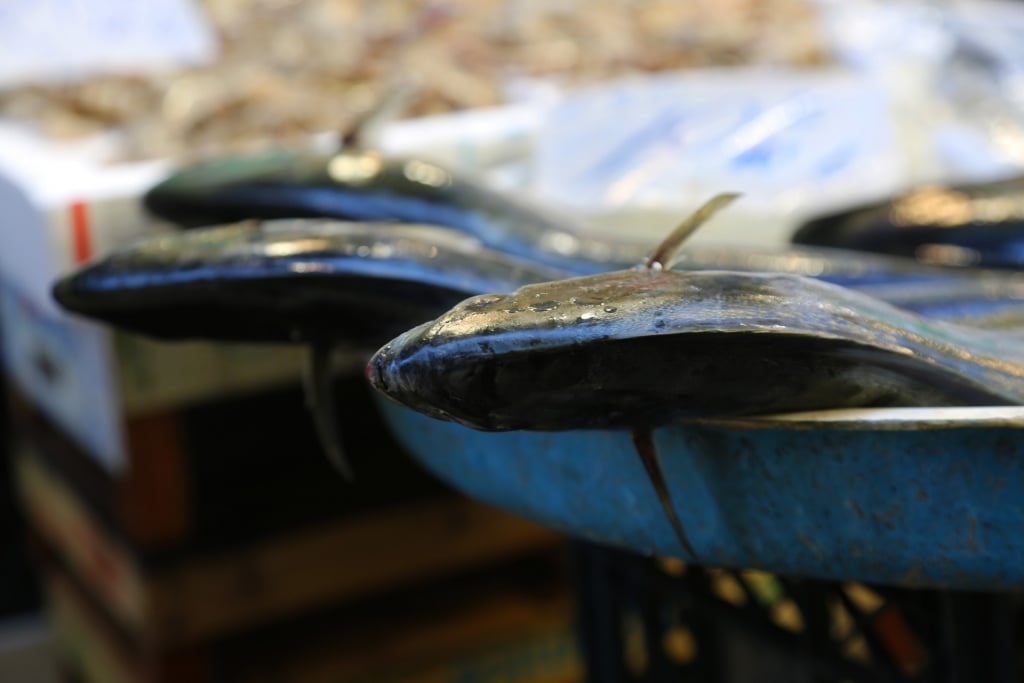
Fresh fish
La Pignasecca is an open-air market close to the shopping street of Via Toledo. Its name references the pine forest that used to scent the air before it was cleared to make way for Naples’ Spanish Quarter.
Today, the fragrances can be less easy to pick out but no less alluring: a heady mix of fresh produce, the glassy-eyed dawn haul from the Bay of Naples, and whatever other Neapolitan necessities you’ll find sold at the cheek-by-jowl stalls of this charismatic place of commerce.
Beyond the Italian dishes of submerged sea urchins and bunches of red chilies, you’ll also find stalls offering anything from cut-price perfume to Italian candy. If you need something more substantial, this is also a great place to pick up fresh cuoppo—paper cones filled with lightly battered anchovies, perfect for snacking.
Browse the Boutiques on Via Toledo
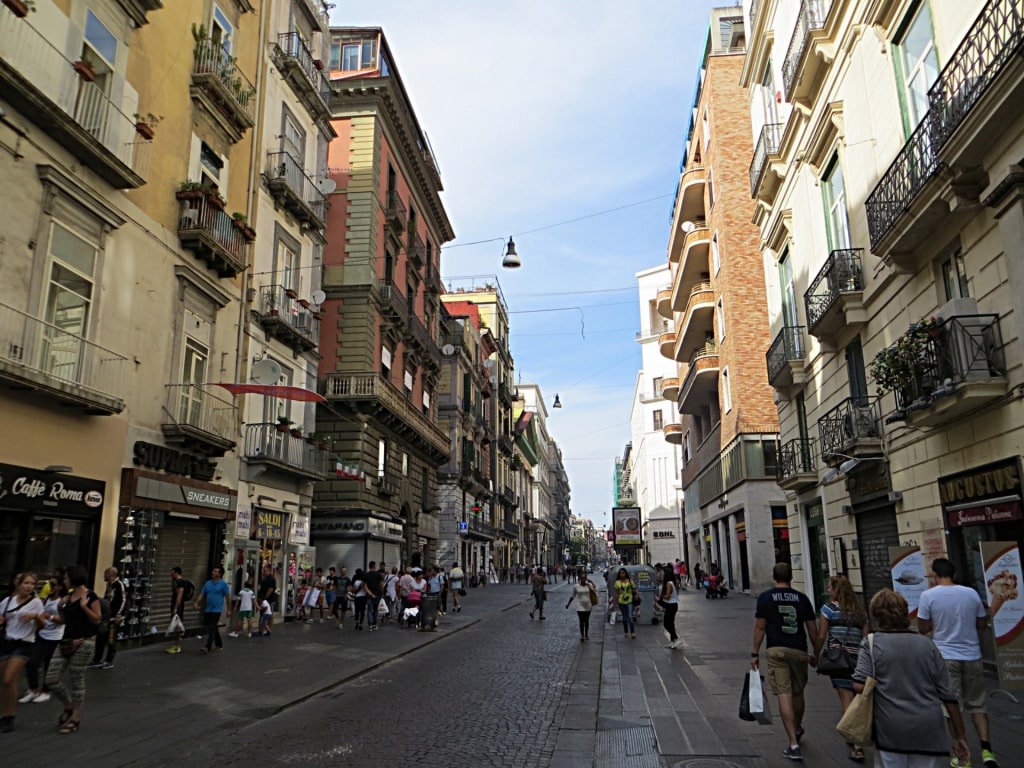
Via Toledo Photo by Mister No on Wikimedia Commons, licensed under CC BY 3.0
Punctuated by the occasional grand palazzo, Via Toledo cuts a dash through the Quartieri Spagnoli. It’s been one of the Spanish Quarter’s—and the city’s—main commercial arteries since 1536.
And while Toledo is known for its shopping, a walk along it offers so much more. It connects Piazza del Plebiscito and Piazza Dante, so to walk its entire under-a-mile length takes in sights including the Royal Palace, the mosaic-fabulous Toledo metro station, as well as the San Carlo Theater. Added color is supplied by local painters and street performers.
However, you may be too distracted being fitted for a new shirt at the renowned Luca Avitabile to notice. Another commercial treasure worth looking in at is Mario Talarico’s artisan umbrella shop. Besides the more niche operations, Via Toledo also features international names like Swarovski.
Eat Sfogliatelle Pastries at Pintauro
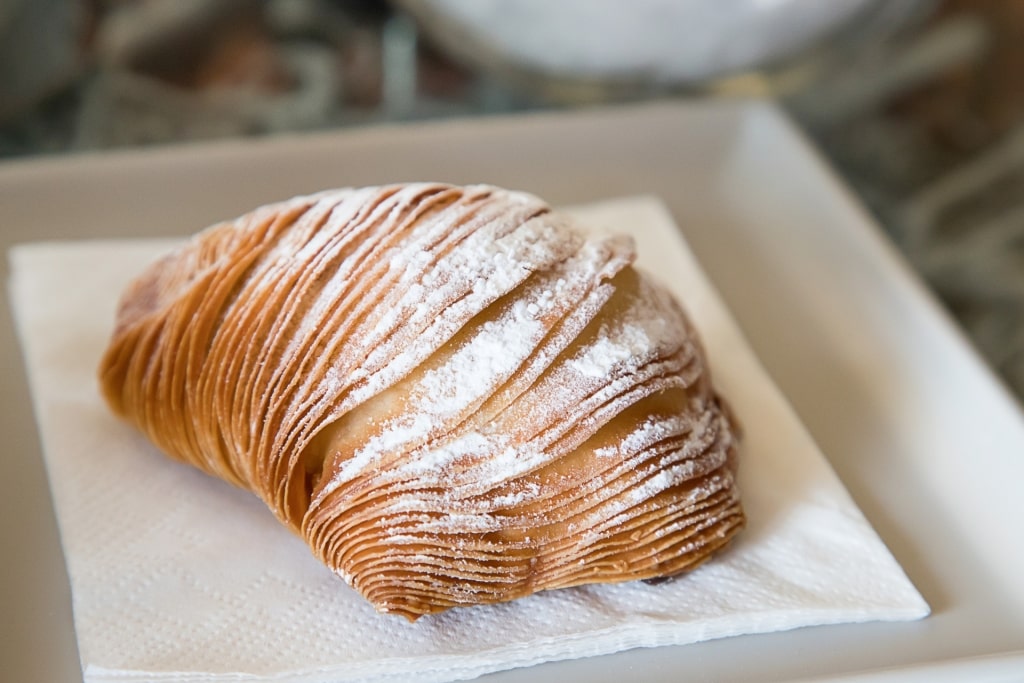
Sfogliatelle
Sfogliatella is a symbol of Naples—sugar-dusted, ricotta-filled, shell-shaped treats fragranced with vanilla, cinnamon, or vivid Sorrento lemons.
While you’ll find these throughout the city, one of the most sought-after spots is the Pintauro Pasticceria. It’s just off Via Toledo, on the corner, and you’ll probably spot the queue of expectant Neapolitans before you see the shopfront.
Once you reach the front of the queue, the smell of this neighborhood pasticceria is as rich as the marble-clad interior. The sfogliatelle are deliciously warm and gloriously crisp, yet with a fluffy, flavorful interior.
Read: Best Food Cities in Italy
Gaze Up at Galleria Umberto I
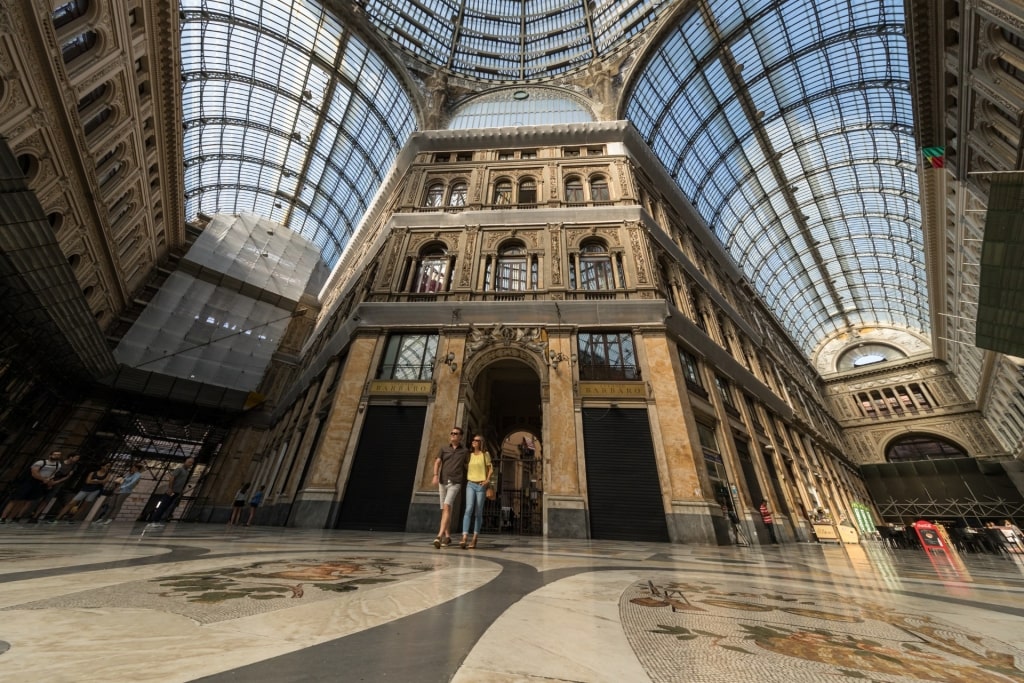
Galleria Umberto I
At the southerly end of Via Toledo is the regal Galleria Umberto I. For any visitors who have also seen Milan’s Galleria Vittorio Emanuele II, a trip to this ornate shopping mall brings on a dizzying sense of deja vu.
The Galleria Umberto is almost an identical twin, with the same ornate marble floors and soaring glass ceilings (but minus the high-end boutiques of the northern city). Now included within the UNESCO World Heritage Site that covers Naples Old Town, the galleria, after years of disrepair, has been returned to its late-19th-century heyday.
Inside, La Sfogliatelle Mary sells some of the city’s best sfogliatelle. Taking a seat and enjoying an espresso at one of the cafés is the perfect way to linger over the beguiling stile Umbertino architecture.
Watch the Sunset From Vomosa Hill
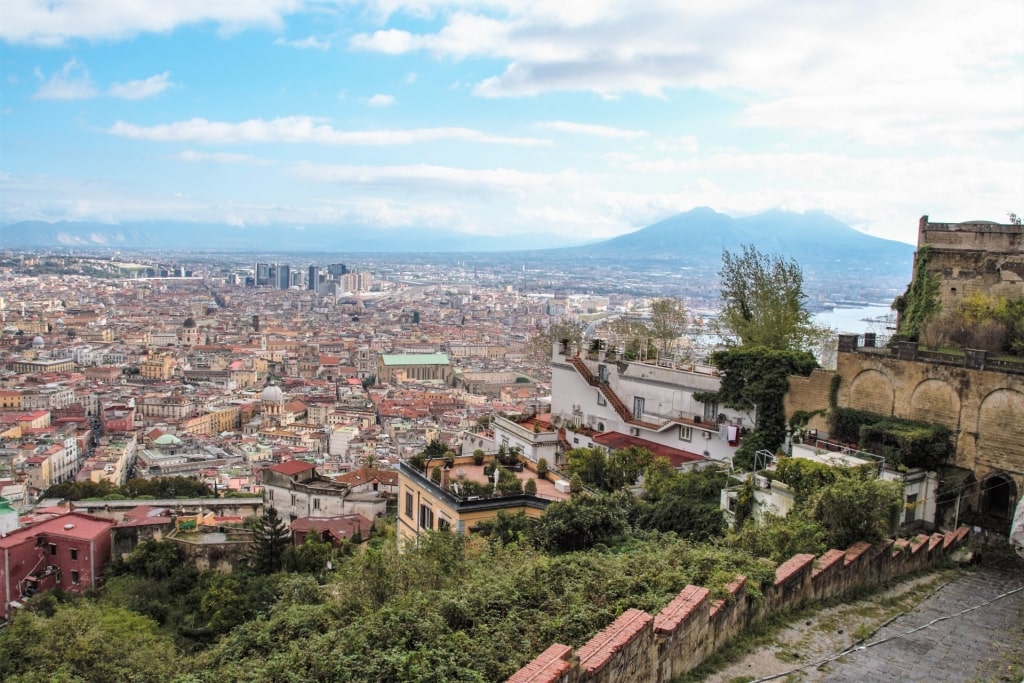
Vomero Hill
Since the 14th century, the Pedamentina walking route has connected both sides of Naples. Created to enable workers to transport building materials, it has also proven useful as part of the city’s defensive network, helping see off invaders set on besieging Castel Sant’Elmo at the hill’s peak.
It’s possible to access the Pedamentina from the Quartieri Spagnoli. If you’ve dined on fabulous pizza, perhaps a game-changing plate of Neapolitan Ragu, and a sfogliatella or two, the proposed route may prove daunting.
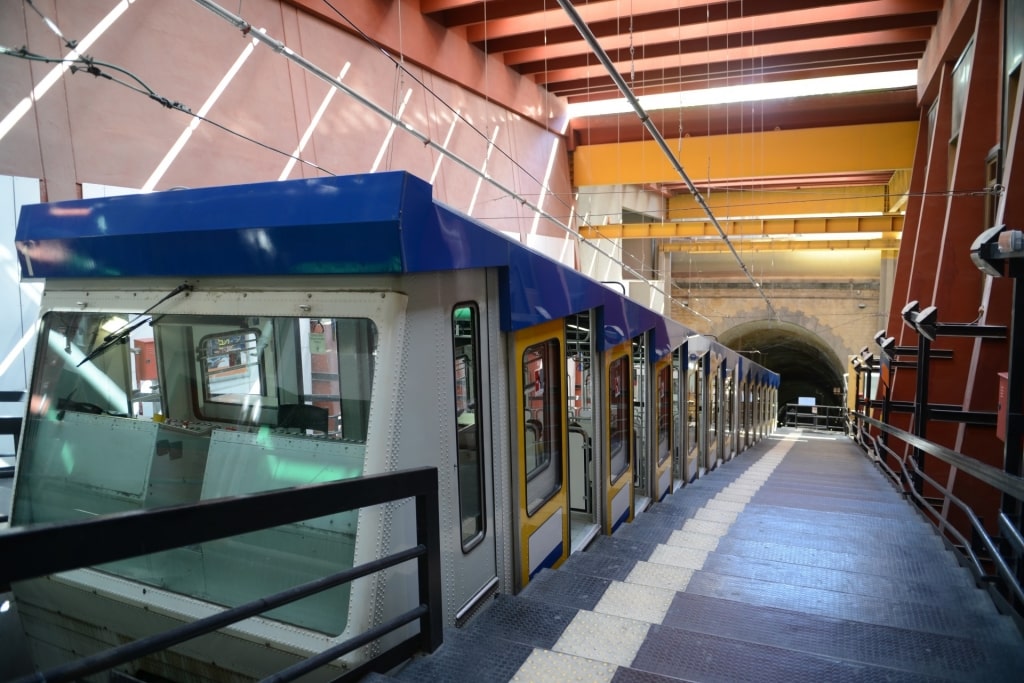
Montesanto Funicular
Some 414 steps stand between you and the summit of Vomero Hill. However, the panorama over Vesuvius and the Bay of Naples is well worth the sweat. You’ll find the beginning of the Pedamentina close to the Quartieri Spagnoli Park.
Alternatively, save those delicious calories and ride the funicular from Piazza Montesanto instead.
Restaurants
Osteria della Mattonella
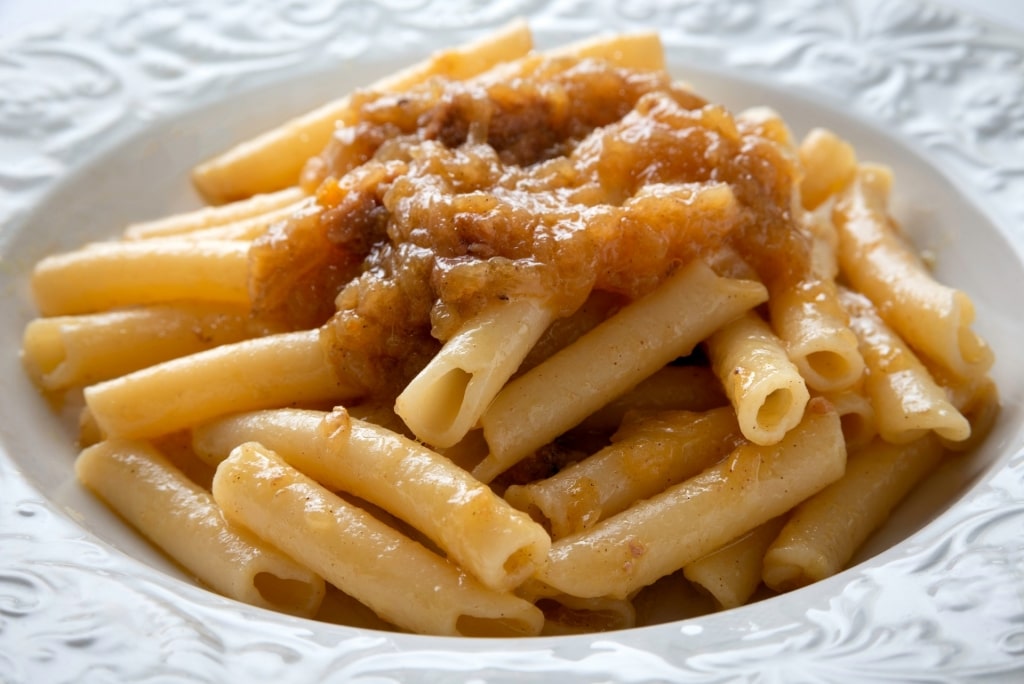
La Genovese
The epitome of the family-run Neapolitan trattoria Osteria della Mattonella is a Spanish Quarter institution. As soon as you step into this restaurant adorned with exquisite 18th-century majolica tiles and festooned with vintage musical instruments, you know what you’re getting.
The La Marangio family makes you feel right at home. Comfort is the culinary watchword here. Among this menu of regional delights, opt for their highly regarded (if deceptively named) “La Genovese”— pasta covered in a white wine and slow-cooked beef sauce. This is a plate of beautifully executed traditional Neapolitan cooking.
Alimentari da Maria
With only four tables, the Alimentari da Maria is a boutique eatery by anyone’s standards. It’s also a thriving example of Neapolitan cuisine and Spanish Quarter culture.
A wonderful delicatessen that reopened its trattoria side in 2018, its antipasto platter is legendary, with morsels drawn from all over Italy. For something warming, try the maccheroni allo scarpariello—a pecorino-rich Spanish Quarter classic. Today, it’s run by Gino, although his mother Maria, who lives opposite, still prepares elements of the menu.
Trattoria A Pignata
While it doesn’t look like much from the outside, this understated trattoria is a neighborhood favorite. The sliding doors open to meet a crowd of regulars hungry for its linguine laced with chunks of fresh crab meat to its moist, superbly seared meats. Be sure to reserve ahead at this ever-popular restaurant.
Pizzeria Speranzella
Naples isn’t shy of a few pizzerias, and the Spanish Quarter’s tight network of lanes is no exception. Pizzeria Speranzella, however, stands out for its exceptional value and quality.
Found close to the Spanish Quarter’s southern border, this pizzeria, with its red check tablecloths, has a sign on its facade showing a Neapolitan youth cheering while a Margherita hovers before him. At only five euros, it’s a believable portrayal.

Wood-fired pizza
You’ll feel similar joy biting into their wood-fired pizzas. Expect the classics on the menu, although it is possible to inquire about off-menu pizzas, including a seafood special.
Travel Tips
Getting to the Spanish Quarter
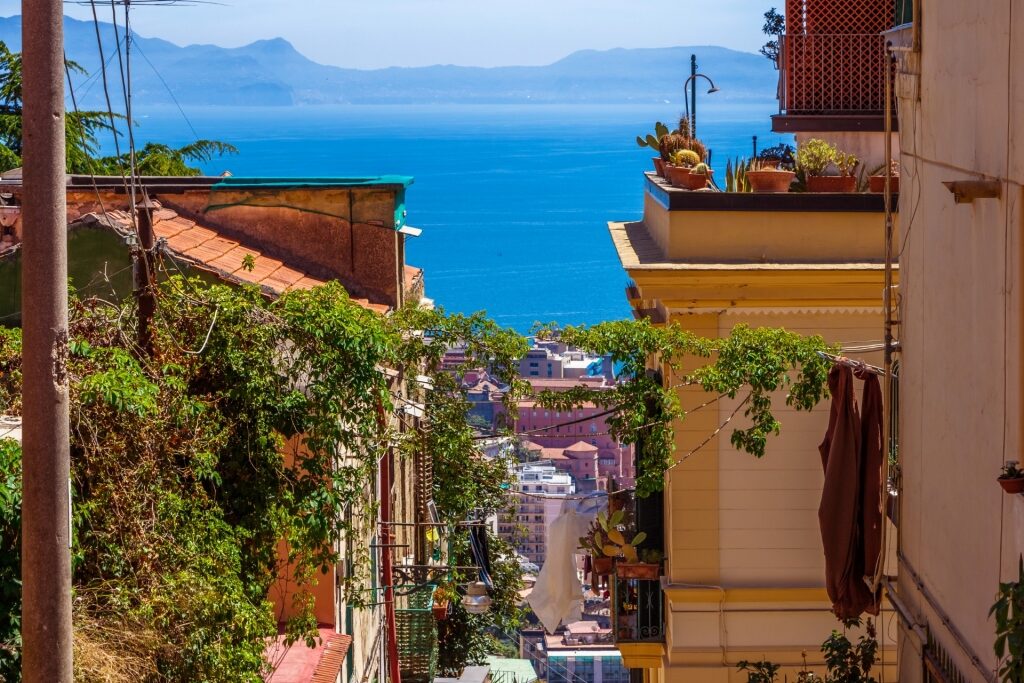
Quartieri Spagnoli
Naples’ Spanish Quarter is located to the west of the historic center, sandwiched between the seafront and Vomero Hill. To reach the neighborhood on the Naples Metro, take Line 1 to Toledo station. From there, it’s just a short walk to the heart of the Spanish Quarter.
Best Time to Visit
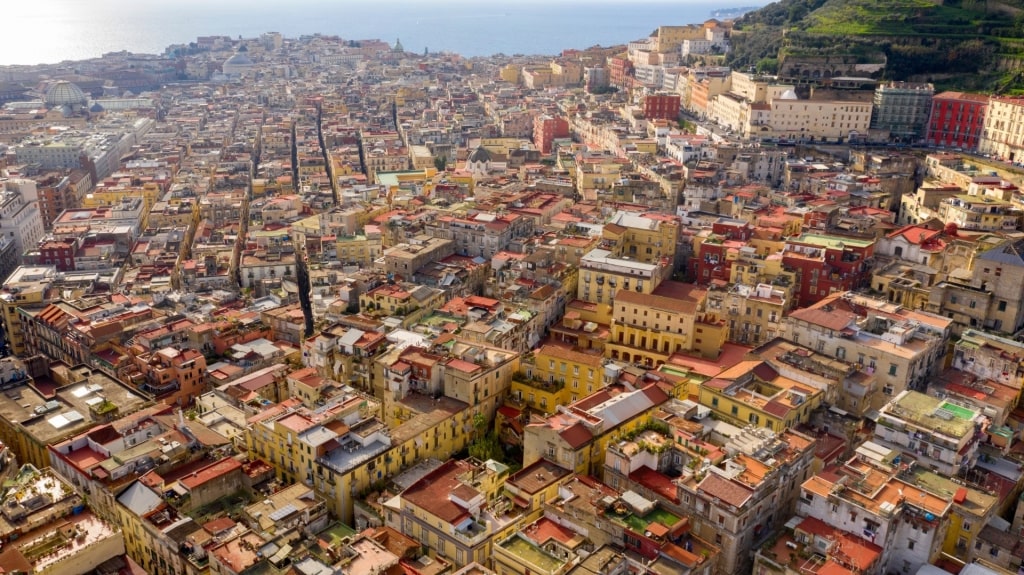
Quartieri Spagnoli
Expect average highs of 84°F if you’re visiting this wonderful southern Italian city in the summer. Sea breezes still work their way into the neighborhood during this time, although August might prove stifling on the warmest days.
The shoulder season months of May and September are wonderful times to visit Naples. With plenty of sunshine and temperatures that fall between 68°F and 77°F, it’s perfect for attempting the Pedamatina. A small chance of rain is accompanied by the likelihood of fewer fellow travelers as well.
What to Pack
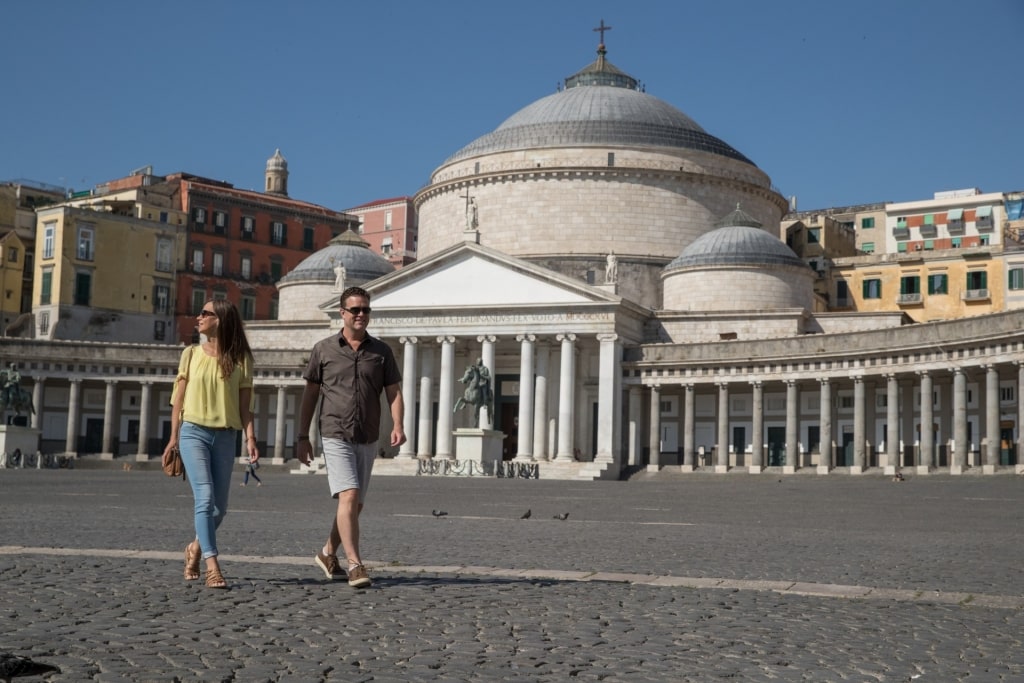
Piazza del Plebiscito
When packing for your visit to the Quartieri Spagnoli, you’ll find that breathable fabrics are best for the warm streets. In the shoulder seasons, be sure to bring another layer for the evenings, while a sun hat, sunscreen, and sunglasses are essential for all except the deep winter months.
Comfortable shoes with good grips are important. The cobbles and flagstones of the Spanish Quarter can occasionally be slippery and uneven.
Currency & Tipping
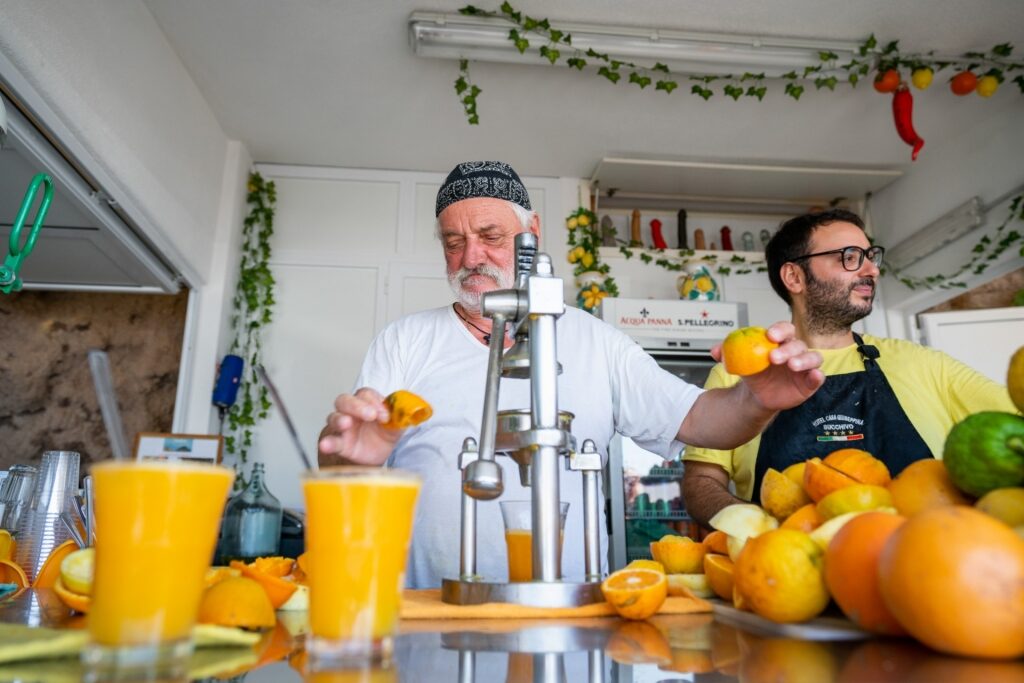
Naples
Throughout Italy, and Naples’ Spanish Quarter is no exception, the Euro (EUR) is the accepted currency.
When visiting Italian markets like La Pignasecca, you’ll want to carry small amounts of cash for purchases, although card machines are increasingly prevalent. ATMs are widely available in the Quartieri Spagnoli.
Tipping in Italy is a custom that is not widely required. Locals will choose to tip between 10 and 15 percent when they feel they have experienced above-and-beyond hospitality. Don’t worry about offending anyone if you tip or not. Leaving the change from the bill is commonplace, though.
Coperto is a service charge that is frequently added to your bill. It’s similar to the tip, except intended to cover the use of plates, cutlery, and so forth.
What to Buy
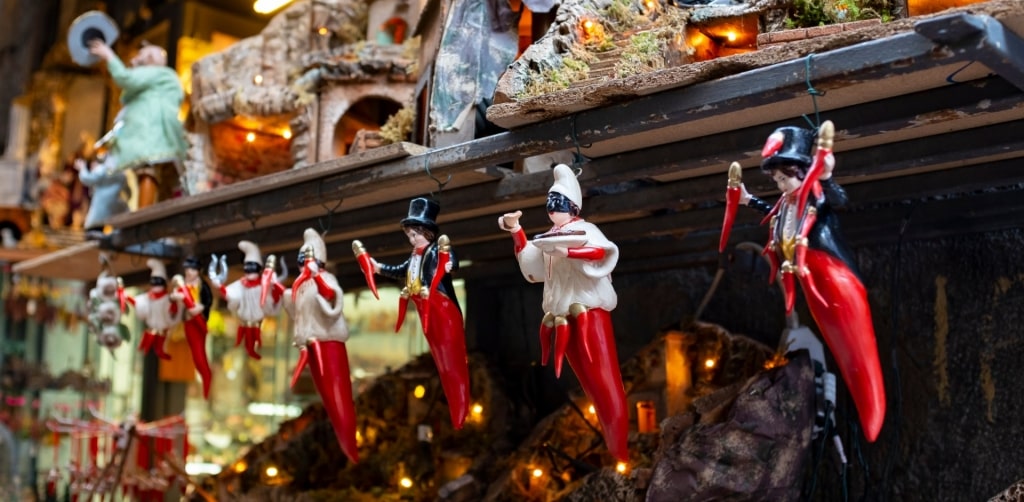
Souvenirs in Naples
There’s a huge choice of souvenirs and gifts in Naples, and the Spanish Quarter is no different. Look out for traditional hand-painted majolica ceramics, Pulcinella masks, lucky curniciello charms, handmade silk ties, or even a distinctive cuccumella coffee pot.
Another favorite is a bottle of limoncello—more Sorrentine than Neapolitan, but close enough.
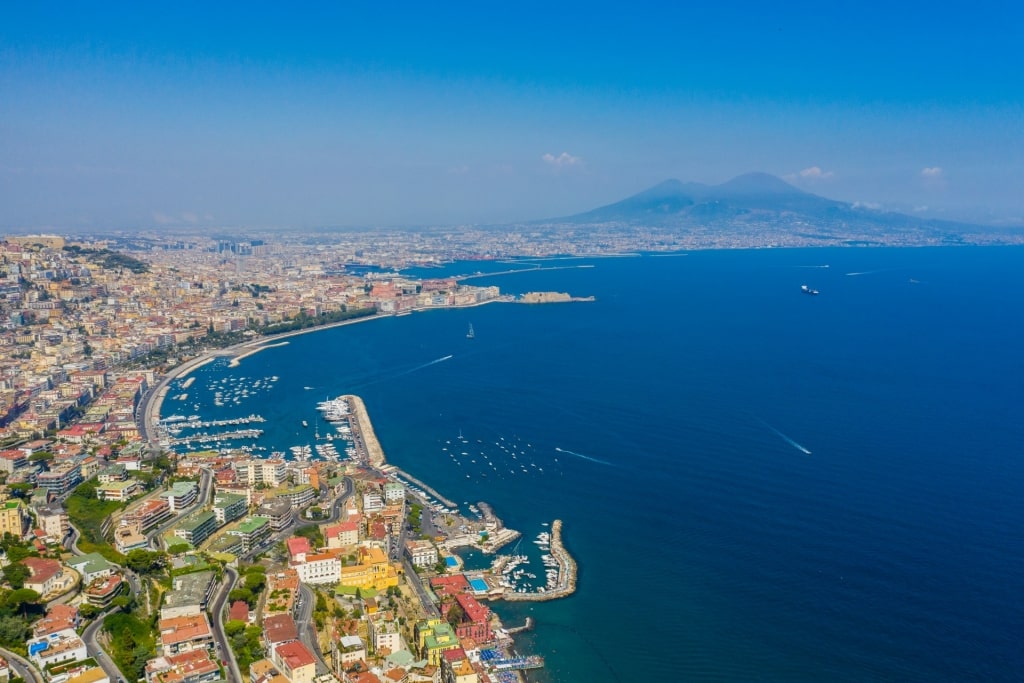
Naples
Visit the colorful lanes of the Quartieri Spagnoli in Naples on a cruise to glorious Italy. Discover its family-run trattorias, towering murals, and vibrant culture. Browse Celebrity’s cruises to Naples and book a memorable vacation to a destination of vivid local color.
